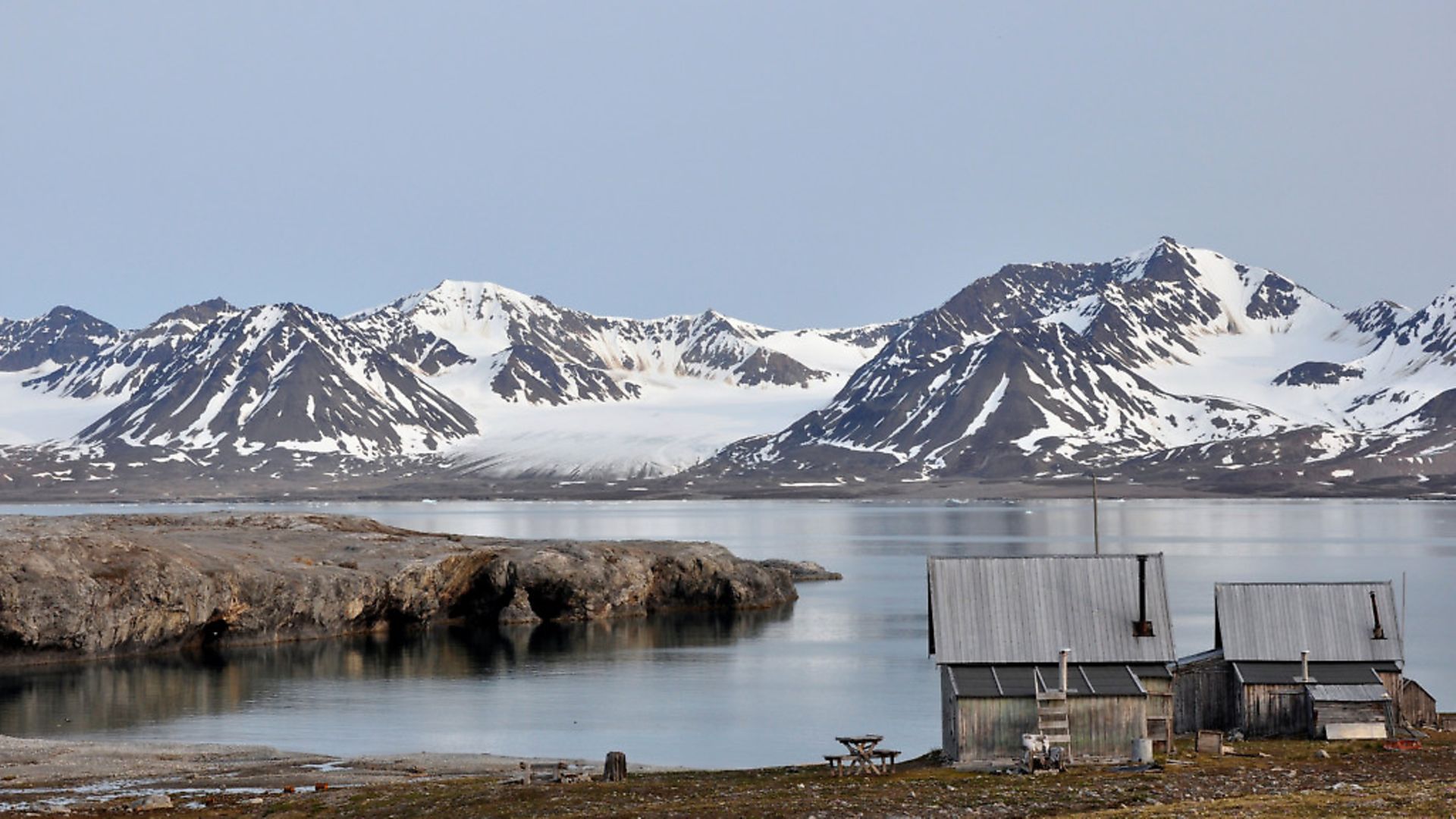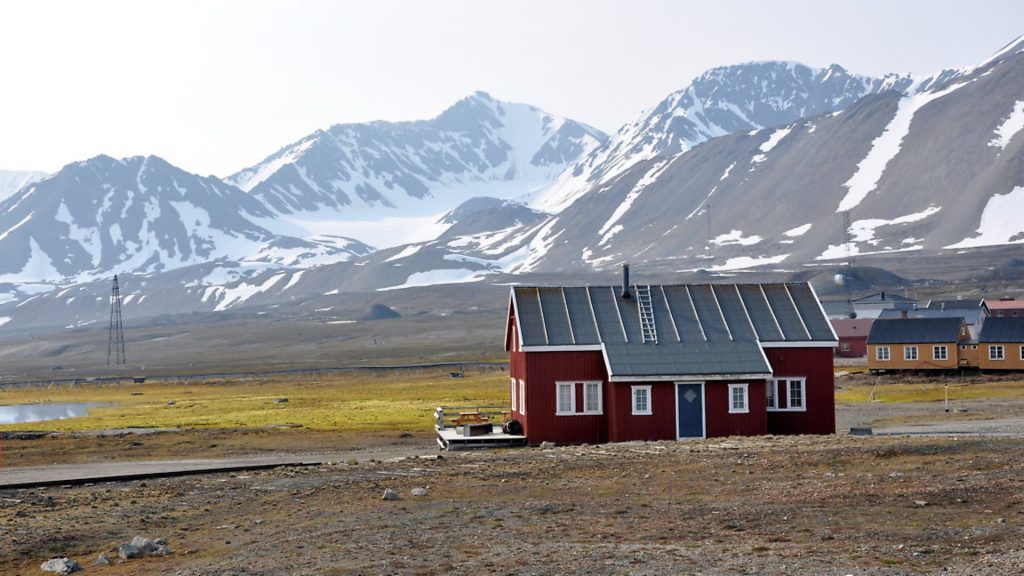
Far-flung Svalbard might seem one of the globe’s backwaters but the pace of change here is far from glacial

There’s a growing sense of unease at the quickening pace of change in the Svalbard archipelago, a collection of Arctic Ocean islands just 600 miles from the North Pole.
It’s more than a quarter of a century since I first flew into Longyearbyen, the Wild West capital of Spitsbergen, its largest island.
The sheer drama and raw beauty of this lonely, mountainous, icebound outpost of Norwegian sovereignty linger long in the memory. Here I have, surreally, shared vodka with Ukrainian miners, watched glaciers calving amid the pristine blue and green beauty of Magdalenefjord, skimmed mountains and glaciers by helicopter, shaken my head at the paradox of ugly coal mining in an otherwise unspoilt wilderness, and enjoyed songs and dances by Russian miners and their families.
But time no longer stands still in a place where – under Norway’s generous interpretation of the terms of the Svalbard Treaty – all nationalities are welcome to live, work and play. Just so long, that is, as they can find a house.
An acute housing shortage is just one of the manifestations of a raft of changes driven, in recent years, by accelerating climate change, evolving economics, the arrival of ‘mass tourism’ (a relative term) and geopolitics.
It is climate change that stands out, as Nalan Koç, research director at the Norwegian Polar Institute, in the Arctic city of Tromsø, explains.
‘The Arctic is warming more rapidly than other regions,’ she says. ‘And, within the Arctic, you have another hotspot in the Barents Sea region around Svalbard, which also has the highest rate of sea ice loss.
‘These two things are interconnected – as the sea ice moves further north, the fresh water layer at the surface is being reduced so that the warm Atlantic layer, which used to be beneath the cold Arctic fresh water, is now in contact with the atmosphere and is heating Svalbard.
‘There are temperature records since 1891 and, for 100 years, temperature increased by 0.3°C per decade. However, since 1990, there has been a 4°C increase.’
Winter temperatures, in particular, have shot up, and there are also fewer ‘cold events’. The fjord at Longyearbyen is no longer guaranteed to freeze and while precipitation is increasing, these days it can be rain, rather than snow, that falls, creating a layer of ice that makes it difficult for native species – like the small, specialised Svalbard reindeer, the Arctic fox and the ptarmigan – to access their food. Meanwhile, a recent unexpected winter thaw has necessitated costly modifications at the underground Global Seed Vault – a facility, deep inside a Svalbard mountain, where seeds from 5,000 crop species from around the world are kept, to preserve them in the event of a future disaster.
‘The growing season has more than doubled around Longyearbyen since 1975 and glaciers are basically melting away,’ adds Koç, predicting that Svalbard’s climate will be more like that of Denmark by the end of this century.
Svalbard exerts a curious lure among Norwegians – like Hilde Kristin Røsvik, who traded a steady job with the state broadcaster in an office of 40 people in Ålesund, in western Norway, to become editor of the Svalbard Post on a short-term contract.
Its circulation on the islands may be small – just 70% of the 2,200 inhabitants are Norwegian speakers – but it is boosted by a much larger worldwide subscription, as Svalbard’s population actually comprises a much larger group of people, many of whom move to and from the islands with work.
‘We see a lot of changes here. Almost every week we have something in the newspaper that is related to climate in one way or another – less permafrost, more avalanches and landslides, closed roads or new species,’ says Røsvik.
Increased avalanche risk has taken 200 homes out of use in Longyearbyen at the very time they are needed most: tourism growth has fuelled the demand for support staff – including 300-400 Thais and Filipinos. The lure of easy cash from Airbnb is only adding more pressure.
‘Tourism is growing very fast,’ says Røsvik. ‘I wrote an editorial the other week about the problem of growth.’
Hotel bed numbers are set to rise from about 1,000 to 1,200 or 1,300, but the biggest growth area is in expedition tourism. ‘There are more rich tourists coming now,’ she says. ‘An expedition place costs 30-50,000 kroner (£3-5,000) and there are a lot of Chinese, Japanese and rich Russians, Germans and British.’
Implicitly or explicitly, Norwegian government policy is driving these numbers. For decades the main plank of the local economy was coal mining and it provided a useful subsidy to the cost of asserting Norwegian sovereignty by maintaining a permanent population. Mining also offered a formal justification for the Soviet Union to maintain communities on the islands throughout the Cold War.
However, the Norwegian government has now said the last significant mine will close, while not saying when, leaving only token extraction to fuel the power station. And there are fewer Russian miners too, as both countries see the future in increased tourism and research activities.
Managing the relationship between tourists and residents sits on the broad shoulders of Ronny Brunvoll, general manager at Visit Svalbard, who refutes the suggestion that tourism poses a threat to fragile local ecology.
‘People fly or they come by cruise ships and the climate issue is a big one. What we focus on is to do what we can locally – how do we manage tourism so that we have it within a controlled environment?
‘Svalbard is a place where it’s more or less free for anybody to do tourism and you don’t have to be part of any organisation. Anyone can start up and that’s the biggest threat. All you need is the documentation and a satellite phone.’
Brunvoll’s mission is to create a year-round viable industry with minimal environmental impact. ‘It’s not sustainable in any way to have two months of high season in winter and two in summer,’ he says. ‘You can’t create the economic environment that businesses need and you definitely can’t create the sustainable jobs that Longyearbyen needs.
‘We need more visitors from October to January to make it profitable at that time of year too, and create year-round jobs.’
The major bone of contention for those who have made a home, however temporary, on Svalbard, is the short season of big cruise ship arrivals. Unlike the smaller expedition vessels, these ‘dirty diesel’ behemoths are allowed to dock only in Longyearbyen. And when 4,500 visitors descend on a town of not even half that number, tension is inevitable.
‘It’s a challenge but we are on it,’ says Brunvoll. ‘We have increased the focus on creating experiences for passengers, to make the ships stay longer. Now they stay between 10 and 10-and-a-half hours instead of three or four. That way we can spread traffic throughout the whole day, with people taking both longer and shorter excursions.’
Some may find their way to Huset, which I remember as a pretty basic pub and entertainment venue, but which is now a top-end restaurant, featuring locally-inspired dishes and an eye-wateringly expensive wine cellar.
Despite the well-publicised impact of the loss of sea ice on migratory polar bears, it is a misconception that the animal is in decline here: rather, numbers are still bouncing back from the decades to 1973 when bears could be hunted legally.
However, as they return more and more to their traditional hunting grounds in the west of the archipelago, it is inevitable that they come into contact more often with humans. In 2011, 17-year-old Horatio Chapple was mauled to death by a bear, while on a British Schools Exploring Society trip. The most recent incident, in which a bear was shot dead after attacking a guide on the expedition cruise ship MS Bremen, is still under investigation.
The geopolitical questions have surfaced as Norway winds down its mining interests. Some analysts, like the writer Per Arne Totland, question the wisdom of this at a time of Russian reassertion of its interests on the world stage.
Svalbard is a sovereign part of Norway and subject to Norwegian legislation. But the Svalbard Treaty of 1920 gives other signatory states the right to engage in exploitation of local natural resources.
When the Norwegian mining company shuts up shop, other non-Norwegian companies could move in and take over the activities, he warns.
‘These companies might be subsidised by their national government and consequently not be dependent on commercial interests,’ says Totland.
A 2016 report from the Russian Ministry of Defence says Norway’s Svalbard policies raise the risk of war, because ‘Norwegian authorities are seeking to establish absolute national jurisdiction over the Svalbard archipelago and the adjacent 200-nautical miles maritime boundary around it’.
However, Arild Moe, senior research fellow at the independent Fridtjof Nansen Institute, says such forecasts are alarmist.
‘Historically, in the post-war period, the Soviet Union was very preoccupied by having a presence on Svalbard and monitoring all sorts of activities. But that’s a bit of an outdated perspective as there is nothing that you couldn’t do from space and militarily. The island does not have the same potential it had 30 years ago as military technology has moved on.’
Svalbard too, is moving on. Though quite where it is heading is still unclear.









